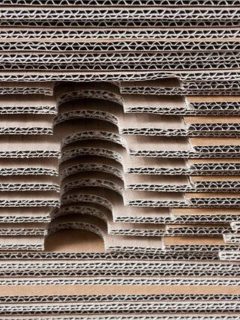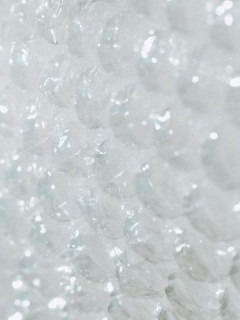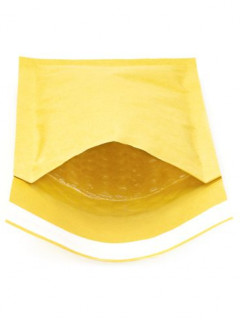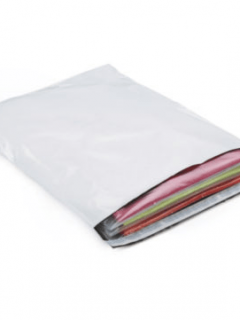Tissue paper is most often associated with school – it is used as an art material in art lessons. Children use it to paste drawing pads to create beautiful, colourful pictures. But this is not the only use for tissue paper. This practical material is often used in the transport industry to wrap parcels. Blotting paper is a material that is easy to shape – ripping, cutting, sticking. What are the most common types of tissue paper?
What is the history of tissue paper? Types of alternatives
Tissue paper is a material well known to our ancestors. Its origins can be traced back to the time when paper was created – initially it was thick and rough, unpleasant to the touch. Many peoples tried to create smooth paper. It was not until the Chinese succeeded – in the 8th century. Three centuries later, the production of various types of paper reached Japan and then the Middle East and Europe. The paper we know today was only developed in the 18th and 19th centuries. Its derivative, fine tissue paper, began to be used as gift wrapping – however, only by the wealthiest social classes. Over time, tissue paper was replaced by decorative paper, which proved to be cheaper, more durable.
What happened to tissue paper? It was mainly used for artwork or floristry. In the 20th century, initially only crinkled tissue paper appeared on shop shelves, which was unrivalled for a long time. No wonder – it was distinguished by its low price and exceptional qualities. Over time, its cousin, plain tissue paper, became popular. It was the one used as a material for professional gift wrapping and decorating invitations.
Blotting paper – types
There are many varieties of tissue paper. The most popular of these are plain (pressed) tissue paper, coloured crinkled tissue paper and decorative tissue paper (sometimes considered a sub-type of plain tissue paper). The first two types are in the form of coloured paper with high absorbent properties. Smooth tissue paper is very thin, while the crinkled version has a rather coarser texture and is also more mouldable. However, this is not all.
Types of plain tissue paper
Smooth tissue paper has – as the name suggests – a flat, fine texture. It is usually available in thin sheets. This multi-coloured material can be described as transparent – it lets light through and the colour fades. It is an excellent material for lanterns or stained glass.
Some of the plain tissue paper can also be described as decorative. Such materials have many aesthetic qualities. They are quite delicate and should therefore be handled with care. Decorative tissue papers can have interesting patterns on the surface. It is also possible to print on them – thus creating a product that is also an advertising medium for a given company. Personalised blotting papers are often placed inside a cardboard box. They cannot be overlooked – they enhance the brand image.
Some plain tissue papers are also considered packaging tissue. They are usually used to separate the products contained in a particular carton from each other. They help to organise the individual items inside a consignment. They act as a filler for parcels. They are excellent at protecting the contents of a box from damage. Smooth wrapping paper also provides an opportunity to enhance the aesthetic qualities of the interior of the parcel. Learn how to pack items in decorative tissue paper – it’s knowledge that will pay off in the future, especially if you work in the warehouse of an online shop.
Types of crinkled tissue paper
Crinkled tissue paper – particularly the 30 g/m2 type – is the most common type of tissue paper. It has different lengths, fancy colours. Those interested may choose not only basic materials of uniform colours, but also patterned ones (checked, dots, stripes, leopard print, with a rainbow motif). An interesting sub-type is metallised crinkled tissue paper (with a shiny surface).
Crepe paper(crepe, Italian crepe paper, Italian tissue paper) is a thick, creped, slightly stiffer version of crinkled tissue paper. Its grammage is 180 g/m2. This thickness allows easy modelling with this material. Crepe paper comes in intense colours. It is used to make various ornaments, gift boxes, interior decorations and accessories for floral bouquets. If it is in the hands of artistically talented people, it can be used to create astonishing floral compositions, which at first glance are difficult to distinguish from live plants. It is particularly appreciated by florists.
The use of tissue paper
Blottingpaper is most often used in cosmetics and in artwork such as scrapbooking and cardmaking.
Crinkled tissue paper is used for various artworks (whether at school or in the art studio). It is especially recommended for making pompoms, stickers, chains (e.g. for a Christmas tree). The use of metallised tissue paper is also worth mentioning – it can be used to decorate invitations and albums, as well as to make lanterns, dividers for albums and books.
Decorative tissue paper will prove useful where decorations are needed. Its delicate structure is then an advantage. It will prove useful, for example, when wrapping jewellery. It can be used to line the inside of a decorative box or parcel or to cover a cardboard box.













